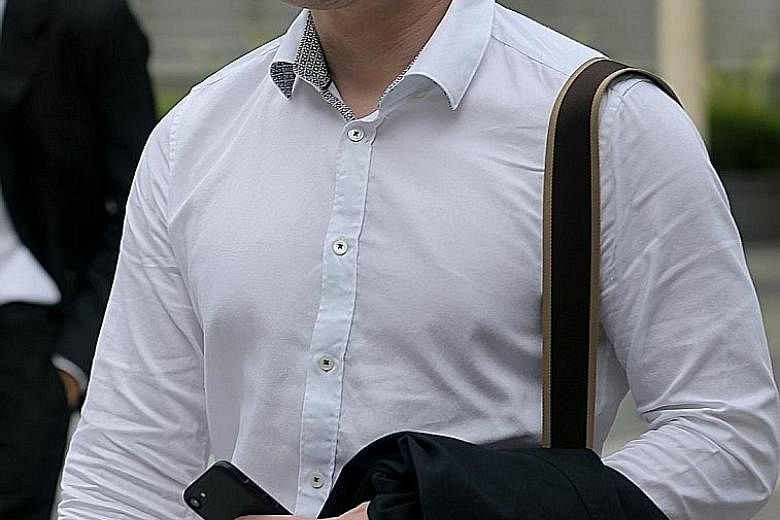While Mr Tan Kok Keng, 67, did die after his own son allegedly put him in a chokehold, it is not conclusive what killed him.
Forensic pathologist Gregory Davis, who testified for the defence yesterday, said stress could also have hastened the death of a man with an already fragile heart.
Businessman Mark Tan Peng Liat, 30, is accused of culpable homicide for the death of his father on Feb 10, 2015.
During an argument over money, Tan allegedly put his father in a headlock and chokehold in their West Coast Rise home. His father suffered a cardiac arrest and was later pronounced dead in hospital.
The defence is arguing that Tan had to restrain his father to stop him from getting hold of swords kept around their home.
Tan, the defence argued, did not know his actions were likely to cause his father's death.
During cross-examination yesterday by Deputy Public Prosecutor Kumaresan Gohulabalan, Dr Davis said two apparently competing causes of Mr Tan's death - hypertensive heart disease and neck compression - are not mutually exclusive.
He disagreed with Health Sciences Authority forensic pathologist Lee Chin Thye, who said the primary cause of death was believed to be a "manual compression of the neck" when Dr Lee took the stand last October.
While Dr Davis agreed there had been pressure to the victim's neck, resulting in a fracture of the thyroid cartilage, he had expected to see more florid petechiae if manual strangulation caused death.
That is the red or purple spots caused by bleeding into the skin.
While Mr Tan's injuries did include a thin film haemorrhage, it is not conclusive evidence that pressure was applied on his neck, said Dr Davis.
He said such a haemorrhage occurs "commonly without pressure on the neck" as well. He also said the cartilage of an older person, from age 45 or so, could be calcified - hardened due to calcium salts - and a blow could break it more easily.
Dr Lee had earlier disagreed that the elderly tend to have more brittle bones and said calcification could have made the cartilage stronger, not weaker.
But Dr Davis agreed with DPP Kumaresan that considering Mr Tan's age, it may have been dangerous for him to be placed in a headlock, with enough force causing the injuries in his neck. This could potentially place a person at risk of cardiac arrest, he said.
Mr Tan had 31 external injuries, including bruises on his neck, and internal injuries such as a fracture to his thyroid cartilage. He was found motionless in a bedroom.
His son had seven minor injuries - bruises and abrasions.
Besides the culpable homicide charge, Tan is also accused of having 15 airsoft guns without a licence.
The trial resumes today.


